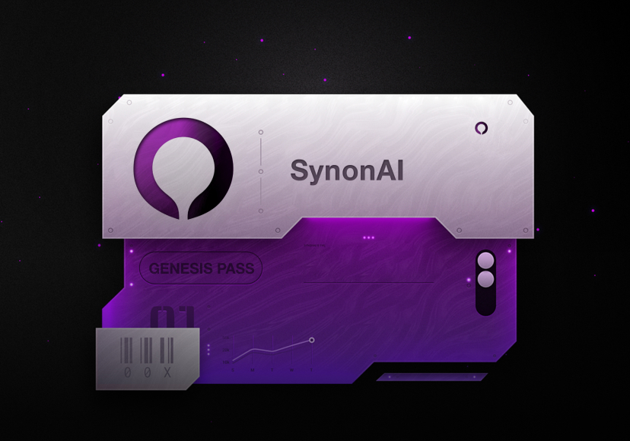Introduction
As artificial intelligence (AI) and blockchain technology continue to evolve, platforms like Kira Nexus, RabitiAI, and SynonAI are leading the way in decentralized AI computing. By leveraging blockchain’s security and transparency, these projects aim to develop scalable AI solutions. This article provides a detailed comparison of Kira Nexus, RabitiAI, and SynonAI, exploring their core technologies, use cases, advantages, and challenges. The goal is to assist investors, developers, and AI enthusiasts in making well-informed decisions.
1. Overview of Kira Nexus, RabitiAI, and SynonAI
Kira Nexus: The AI-Blockchain Infrastructure

Kira Nexus is a comprehensive AI platform for Web3, powered by its native token, $KLAI. The platform focuses on integrating AI into decentralized applications (dApps) and providing AI-driven services within the Web3 ecosystem.
Key Features:
- AI Integration: Supports embedding AI functionalities into Web3 applications.
- Decentralized Marketplace: Facilitates access to AI services, enabling businesses and developers to engage with AI solutions.
- Token Incentives: Uses $KLAI to encourage participation and utilization within its ecosystem.
RabitiAI: The Consumer-Focused AI Layer

RabitiAI positions itself as a next-generation decentralized AI layer, designed to connect consumers, creators, and open-source researchers. Unlike Kira Nexus, it emphasizes AI-human interaction and personalized experiences.
Key Features:
- Decentralized AI Interactions: Ensures privacy-focused personalization through decentralized processing.
- AI Agents: Utilizes advanced machine learning to develop intelligent AI agents for user interaction.
- Community Engagement: Fosters collaboration between consumers, creators, and researchers to advance AI development.
SynonAI: The Artificial Intelligence-Optimized Blockchain

It differentiates itself as a Layer 1 blockchain specifically designed for AI applications. By leveraging GPU power, it enables decentralized computing and AI model training, effectively merging artificial intelligence and blockchain technologies.
Key Features:
- GPU-Powered Computing: Uses GPU resources to optimize AI computations.
- Decentralized AI Training: Supports secure and scalable AI model training in a decentralized setting.
- AI-Powered dApps: Enables the creation and deployment of AI-driven decentralized applications.
2. Core Technology and Infrastructure
To better understand the differences between these platforms, the following table compares key technological aspects:
| Feature | Kira Nexus | RabitiAI | SynonAI |
|---|---|---|---|
| Blockchain | Ethereum-based, AI-integrated for Web3 applications | Ethereum-based, consumer-focused AI layer | Custom Layer 1 blockchain optimized for AI |
| Consensus Mechanism | Token incentives to drive ecosystem participation | Decentralized processing for privacy protection | GPU-powered consensus for AI computations |
| AI Specialization | AI functionalities within decentralized applications | AI-human interaction and personalized AI | On-chain AI training and dApp execution |
| Developer Focus | Developers integrating AI into dApps | AI researchers and consumer-facing AI developers | Developers building AI-powered blockchain applications |
| Security & Privacy | Smart contracts ensure data integrity | Decentralized processing for user privacy | Sovereign hyperchains secure AI models |
3. Use Cases and Applications
Kira Nexus: AI in Web3
- Decentralized Applications (dApps): Enhances Web3 applications with AI-driven features.
- AI Service Marketplace: Businesses can offer and access AI solutions in a decentralized environment.
- Web3 Enhancements: Expands Web3 capabilities by integrating AI tools and services for more intelligent decentralized platforms.
RabitiAI: Personalized AI Solutions
- Smart Assistants: AI-powered agents capable of personalized interactions.
- Decentralized Marketplaces: Connects AI developers and researchers with end users for seamless collaboration.
- User Privacy: Ensures AI interactions occur with data protection through decentralized processing.
SynonAI: A AI-Optimized Blockchain
- AI-Powered dApps: Facilitates decentralized applications utilizing AI capabilities.
- Decentralized AI Training: Supports on-chain training of AI models for enhanced security and scalability.
- Autonomous AI Networks: Enables AI models to interact independently within the blockchain ecosystem.
4. Advantages and Challenges
Each platform offers distinct benefits and challenges, as summarized below:
| Project | Advantages | Challenges |
| Kira Nexus | Enables AI integration into Web3 applications and provides a decentralized AI service marketplace. | Requires broader adoption among developers to maximize its potential. |
| RabitiAI | Focuses on AI personalization while maintaining data privacy. | Faces challenges in scaling personalized AI interactions while preserving decentralization. |
| SynonAI | Optimized blockchain infrastructure for AI applications with GPU acceleration. | Must address the high computational costs of GPU-powered consensus mechanisms. |
Conclusion
Kira Nexus, RabitiAI, and SynonAI offer unique solutions at the intersection of AI and blockchain. Kira Nexus specializes in Web3 AI integration, RabitiAI focuses on AI-human interactions, and SynonAI provides an AI-optimized blockchain framework. The best choice depends on the specific needs of developers, businesses, and AI researchers.
By understanding their technologies, use cases, and potential challenges, stakeholders can make informed decisions about which platform aligns with their objectives. Staying updated on decentralized AI advancements will be crucial for navigating this rapidly evolving sector.
Disclaimer: This article is for informational purposes only and does not constitute financial or investment advice. Always conduct your own research before making any investment decisions.




